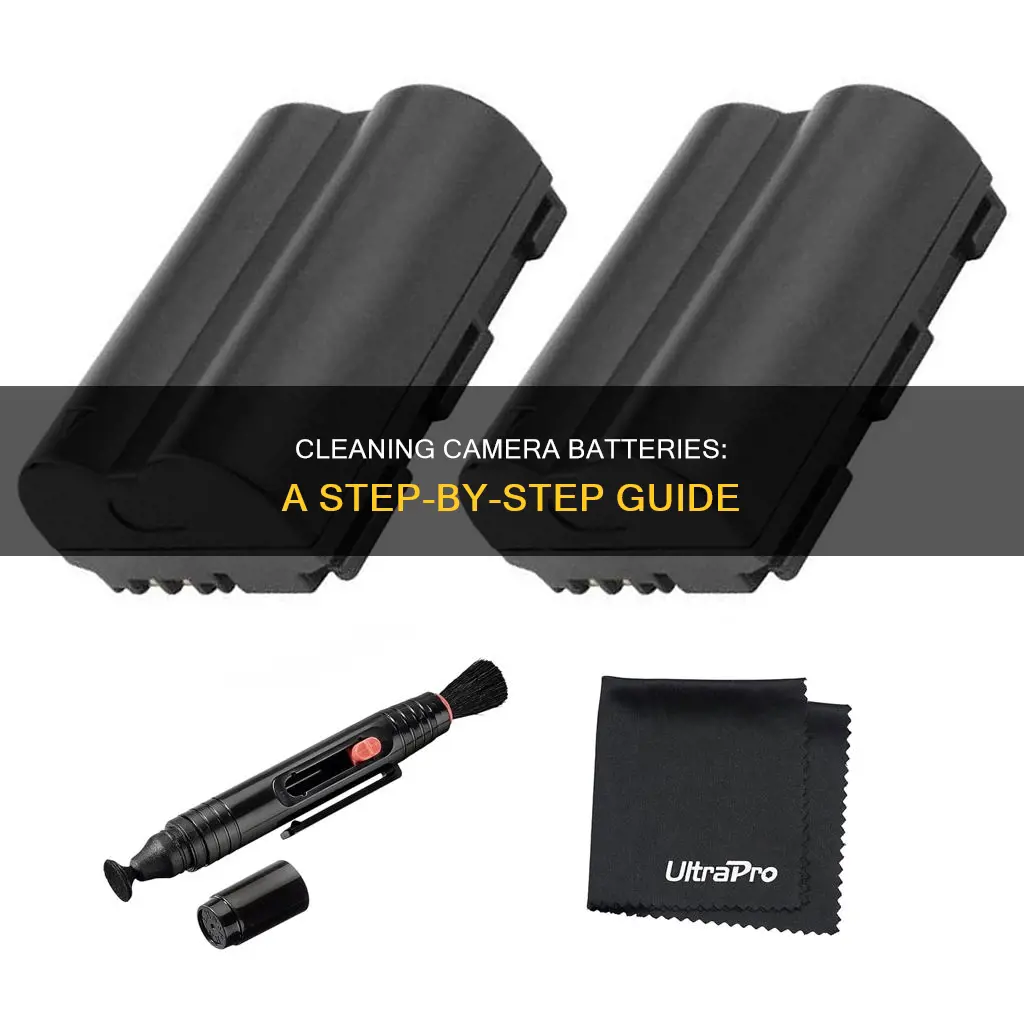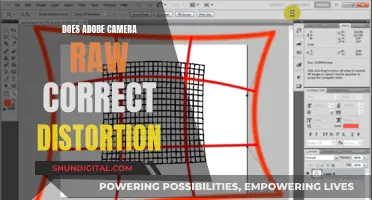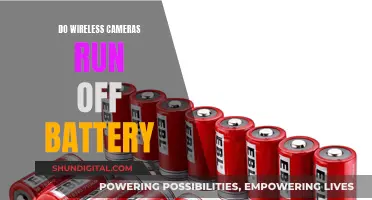
If you've noticed corrosion on your camera's battery terminals, don't panic! It's a common issue that can be easily fixed. Corrosion typically occurs when a camera is stored for an extended period with the batteries still inside. In this guide, we'll walk you through the steps to clean off the battery corrosion and get your camera working again. We'll also offer tips on how to prevent corrosion in the future.
How to Clean Off the Battery of a Camera
| Characteristics | Values |
|---|---|
| Protective gear | Gloves, safety glasses, long-sleeved clothing |
| Clean the battery | Use white vinegar, lemon juice, or baking soda |
| Clean the terminals | Use a brush, toothbrush, or sandpaper |
| Dry the terminals | Let the terminals dry before putting in new batteries |
| Clean the compartment | Use a cotton swab, Q-tip, or microfiber cloth |
| Clean with alcohol | Use isopropyl alcohol to clean the compartment |
| Prevent corrosion | Remove batteries if storing the camera for a long time |
What You'll Learn

Wear protective clothing, including gloves and safety goggles
When cleaning the battery of a camera, it is important to wear protective clothing, including gloves and safety goggles. This is because the process involves handling corrosive substances and battery acid, which can be dangerous if they come into contact with your skin or eyes.
Gloves will protect your hands from the corrosive substances and battery acid. Choose gloves that are made of a durable material, such as rubber or nitrile, that will create a barrier between your skin and the chemicals you will be using. This will prevent the chemicals from irritating or damaging your skin.
Safety goggles are equally important to protect your eyes from any splashes or spills of corrosive substances or battery acid. Choose a pair of safety goggles that fit snugly and comfortably on your face, with adjustable straps to ensure a secure fit. The goggles should have side shields to provide additional protection from splashes and spills.
When wearing protective clothing, it is important to ensure that your clothing covers your skin adequately. Avoid wearing short sleeves or exposing your skin, as this could lead to accidental contact with the corrosive substances or battery acid. Consider wearing long pants, a long-sleeved shirt, and closed-toe shoes to protect your skin.
Before beginning the cleaning process, make sure you have all the necessary supplies within reach. This includes the gloves, safety goggles, cleaning solutions, cotton swabs, and any other tools you may need. By having everything within easy reach, you reduce the risk of accidental spills or exposure while you work.
Once you have put on your protective clothing and gathered your supplies, you can begin the process of cleaning the battery of your camera. Remember to follow the subsequent steps carefully and always prioritize your safety when handling corrosive substances and battery acid.
Charging Your Polaroid: A Step-by-Step Guide to Powering Up
You may want to see also

Identify corrosion, usually a flaky, white substance
Corrosion on a camera's battery and its terminals is usually identified as a flaky, white substance and can be cleaned. This corrosion is caused by the alkalinity of the battery and the release of hydrogen gas, which mixes with air and humidity.
To clean the corrosion, you can follow these steps:
Method 1: White Vinegar Method
- Take some distilled white vinegar and pour it into a small cup.
- Dip a cotton bud or Q-tip into the vinegar and gently scrub the corroded areas.
- For more extreme corrosion, use a small piece of sandpaper to scrub the affected areas.
- Go back over the area with a cotton swab, and continue until your camera is clean.
Method 2: Baking Soda Method
- Mix two tablespoons of baking soda with two cups of water.
- Pour the baking soda mixture over the terminals to neutralise the rust.
- Use a brush or sandpaper to carefully scrub off the corrosion, being careful not to damage the sensitive terminals.
- Allow the terminals to dry completely before inserting new batteries.
Other Methods:
Other methods to clean corrosion include using a mixture of water and baking soda, or isopropyl alcohol applied with a Q-tip. Additionally, coke can be used to scrub down corrosion, as its acidity neutralises it.
Lorex Security Cameras: Understanding Battery Life
You may want to see also

Use a cotton swab to apply vinegar or lemon juice to the corroded area
When cleaning the corroded area of a camera battery, it is important to take safety precautions. Wear gloves to avoid any contact with the leaked battery acid, and work in a well-ventilated area to avoid inhaling toxic fumes. Protect your work surfaces and wear gloves and safety glasses.
To clean the corroded area, use a cotton swab to apply vinegar or lemon juice. Vinegar and lemon juice are acidic and will help to neutralise the alkaline fluid in the battery. Dip the cotton swab into the vinegar or lemon juice, and gently rub it onto the corroded area. You can also use a small toothbrush for this step. Be careful not to oversaturate the swab, as you do not want liquid to get inside the electrical components of your camera.
Let the vinegar or lemon juice sit for a minute or two, then wipe away the crystalline corrosion from the battery contacts and other areas in the battery compartment where it may have spread. For stubborn spots, try scrubbing with a toothbrush. You can also use a toothpick to scrape off any lingering residue.
After cleaning with vinegar or lemon juice, rinse the area with water to remove any remaining acid. Then, dry the camera with a microfiber cloth or blow away any fibres with compressed gas. Make sure everything is completely dry before installing fresh batteries and powering up your camera.
Camera Battery Charging: How Long Does It Take?
You may want to see also

Neutralise the corrosion with baking soda
To neutralise corrosion with baking soda, you will need the following:
- Baking soda
- Water
- A scrubbing pad
- A clean towel
- White vinegar (optional)
- Isopropyl alcohol (optional)
First, make a mixture of two tablespoons of baking soda and two cups of water. Stir the mixture until the baking soda is dissolved. If your camera has a battery compartment, keep the camera upright so the mixture doesn't drip inside.
Next, apply the baking soda mixture to the corroded terminals of the camera battery. You can pour the mixture over the terminals or dip a Q-tip or cotton swab into the mixture and apply it that way. The baking soda will neutralise the acid and break down the rust.
Let the mixture sit for a few minutes. Then, gently scrub the terminals with a wet scrubbing pad or a piece of sandpaper to remove any remaining corrosion. Be careful not to scrub too hard, as the terminals are sensitive and can be damaged.
If desired, you can also add a bit of vinegar to the affected areas before scrubbing. The baking soda and vinegar will react to create oxygen, helping to lift the rust off the metal surfaces. However, be careful not to use too much vinegar, as it can damage the internals of the camera.
Finally, clean the terminals with a clean, dry towel and allow them to air dry completely before putting in new batteries.
If you want to take extra precautions, you can also clean the terminals with isopropyl alcohol before and after applying the baking soda mixture.
Dodge Charger GT: Reverse Camera Availability
You may want to see also

Clean the terminals with a brush or sandpaper
To clean the terminals with a brush or sandpaper, start by removing the batteries from the camera. This is important to ensure that you do not get anything inside the camera, which could cause further problems.
Next, identify where the corrosion is. It usually appears as a white, flaky, or crusty substance on the battery terminals and contacts in the battery compartment. It may also look like rust. Use a flashlight to help you identify the corroded areas if needed.
Now, take a brush or a piece of fine-grit sandpaper and carefully scrub the terminals to remove the corrosion. Be gentle and careful during this process, as the terminals are sensitive and can be easily damaged. If the corrosion is particularly stubborn, you may need to use a small, flathead screwdriver to gently scrape it off.
Once you have removed the corrosion, use a clean, dry cloth to wipe down the terminals and remove any remaining residue. Ensure that the terminals are completely dry before putting the batteries back in and using the camera.
Congestion Charge Cameras: Effective or Invasive?
You may want to see also
Frequently asked questions
It's important to protect yourself from chemical burns when cleaning your camera's battery. Wear long-sleeved clothing, gloves, and safety goggles to prevent the corrosive chemicals from touching your skin or getting into your eyes.
You can use white vinegar, lemon juice, or baking soda to neutralise the corrosion. For more extreme areas, you can use sandpaper to scrub away the corrosion. To finish up, use isopropyl alcohol to clean the electronics without leaving any moisture or residue.
First, identify where the corrosion is and apply some isopropyl alcohol to a cotton swab. Gently clean the affected areas. Next, add baking soda to these areas and apply vinegar using a new cotton swab. Clean it off using a towel and give it another pass with isopropyl alcohol. Let it dry and gently pat it down.







